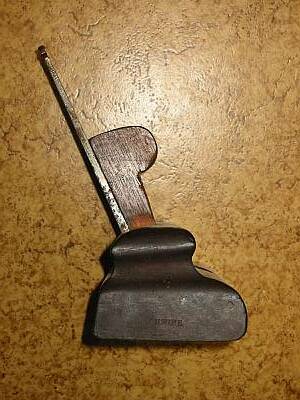J_SAMa
Established Member
I've never used or even touched one of these so-called "granny's tooth" router planes (the type fitted with a plough cutter locked down by a wedge). The few example that's come up on eBay recently have extremely high bedding angles, at least 60, approaching 70. My understanding is that routers are primarily used cross-grain (at least the bevel-up 071 and 722 are), so how exactly do you plane cross grain with a blade that steep?
Can't post links to active listings, but here's a picutre so you know what I'm talking about...

It's not like you need to worry about tear out in a dado so how come so many routers were made like this :? ?
Sam
Can't post links to active listings, but here's a picutre so you know what I'm talking about...

It's not like you need to worry about tear out in a dado so how come so many routers were made like this :? ?
Sam

































